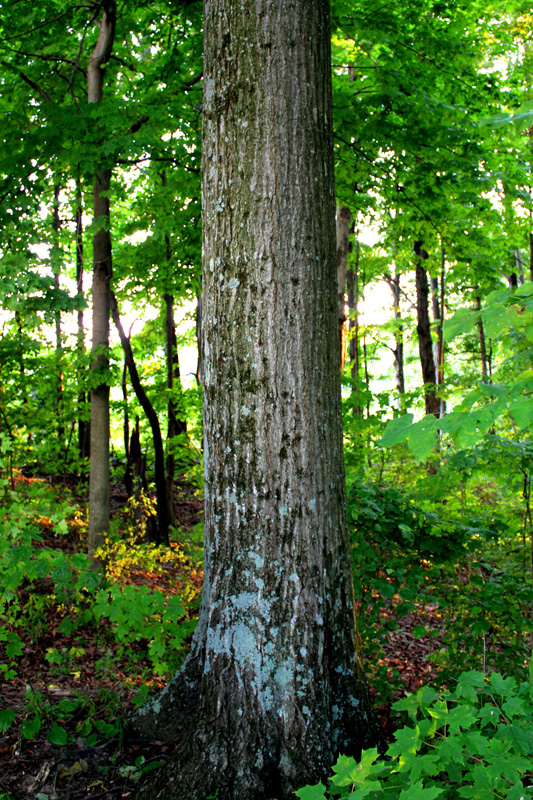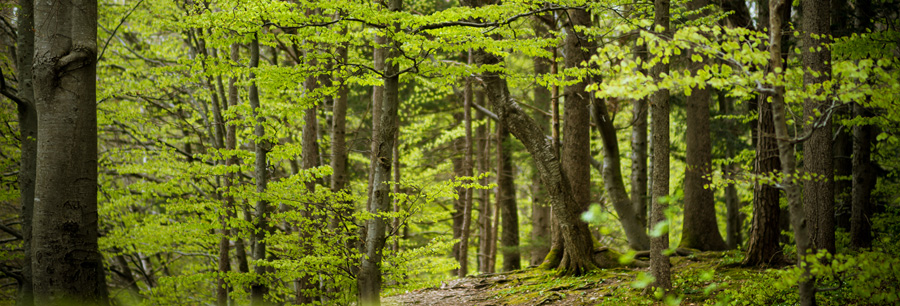 Northern Red Oak (Quercus rubra)
Northern Red Oak (Quercus rubra)
is the most common species of the red oaks. When someone says “red oak” they usually mean “northern red oak”. Technically there are 12 species of red oak in Indiana, and the quality varies dramatically between the species. Some species make only pallet lumber, like pin oak and scarlet oak, and others, like northern red oak and black oak, can potentially produce excellent quality lumber.
Wildlife value
Red oaks are not as nearly as valuable to wildlife as white oaks, but they still are an important species. Acorns from red oaks are less desirable due to being more bitter, but one advantage of red oak acorns is the delayed germination in the spring. This makes the red oak acorns better for storage. Acorn production can be quite variable, like northern red oak are very inconsistent producers, more predictable, like black oak and very consistent heavy producers, such as pin oak. More than 100 species of vertebrate animals are known to consume acorns in North America including mammals such as white-tailed deer, gray squirrels, fox squirrels, flying squirrels, mice, voles, rabbits, raccoons, opossums, gray foxes, red foxes, and wild hogs. Birds that feed on acorns include wild turkey, bobwhite quail, wood ducks, mallards, woodpeckers, crows, and jays. Acorns are such an indispensable component in the diets of some animals that they change their movement patterns in response to acorn production. For example, deer may spend more time in oak-dominated stands during autumn of years when acorns are abundant, and more time in other habitat types during years when acorns are less abundant. Also, the home range of black bears may decrease in years when acorns are abundant, and increase (along with complaints of nuisance activity) during years when acorns are scarce. Similarly, wild turkeys often have smaller home ranges when acorns are abundant, with reduced seasonal shifts in the locations of their home ranges.
Commercial Value
Red oak constitutes about one-third of all the hardwood lumber produced. Red oak is a term that can contain as many as 17 different species of trees. Northern red oak is the most preferred species. Red oak wood color can vary from a very light pink to a blood red color. Many secondary manufacturers who process red oak lumber will sort the lumber for color. Red oak lumber has a very showy grain pattern. It is a ring porous wood, which means that in the spring of the year it produces very large diameter pores that are visible to the naked eye. Later in the growing season it suddenly begins to make small diameter pores. This alternating pattern of growth rings gives oaks it’s coarse grain pattern we enjoy.
Firewood Attributes
24 million BTU’s in a cord of air dried firewood.
Easy to burn.
Not easy split.
Does not smoke heavy.
Throws no/few sparks.
Minimal aroma.

